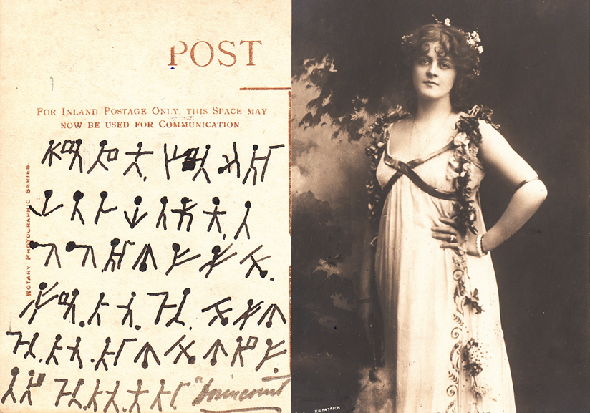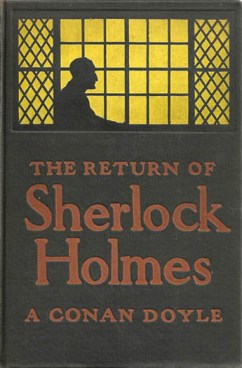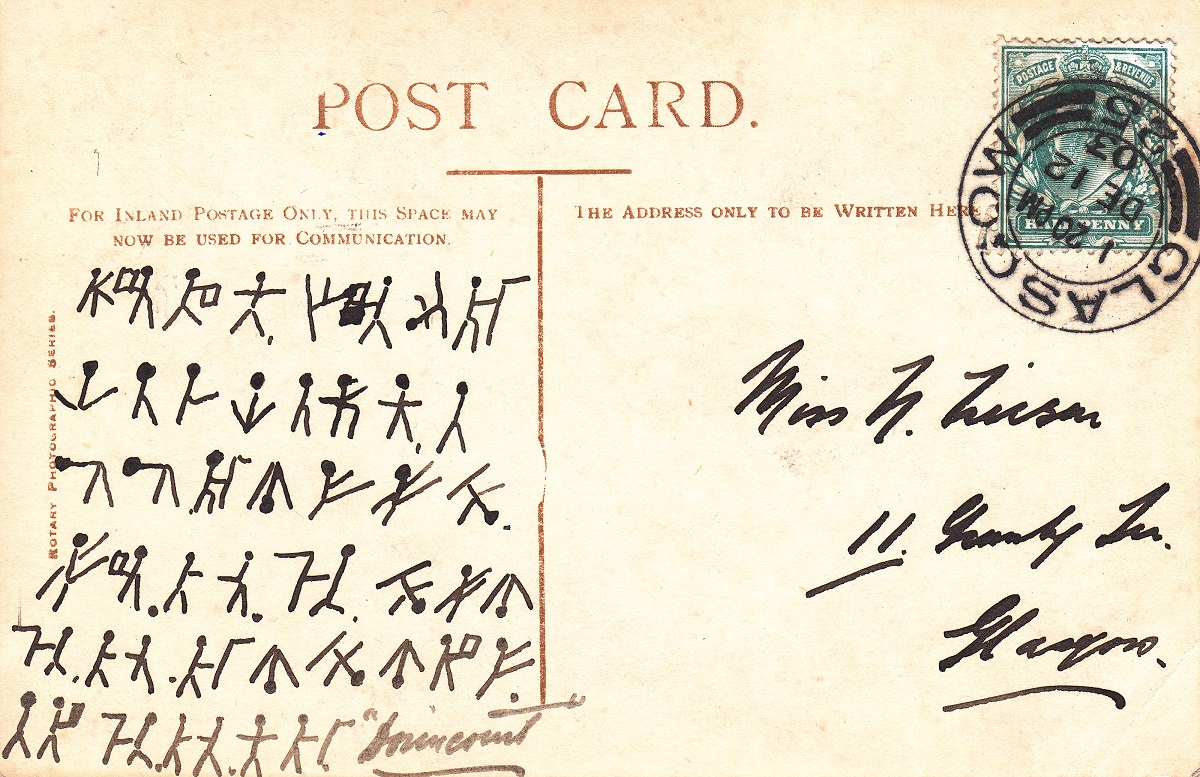A postcard from 1903 is encrypted in a dancing men code, like it is described in a famous Sherlock Holmes story. Can a reader decipher it?
The Adventure of the Dancing Men is a Sherlock Holmes story published in Arthur Conan Doyle’s 1905 book The Return of Sherlock Holmes.
A crypto short story
For crypto enthusiasts, The Adventure of the Dancing Men is especially interesting because a number of encrypted texts play a role in it. These cryptograms are messages encoded with stick figures (“dancing men”), like the following.
As Sherlock Holmes finds out, the dancing men represent a one-to-one cipher (MASC). He solves several dancing men ciphertexts using frequency analysis and finally even forges an encrypted message. In the end, the case is solved and the perpetrator is arrested. Doyle ranked The Adventure of the Dancing Men third in his list of his twelve favorite Holmes stories.
A dancing men postcard
My friend Karsten Hansky recently dicovered a postcard that must have been written by a Sherlock Holmes fan. The picture side (which is not Shoerlock Holmes related) …
… shows a photograph of English actress and singer Marie Studholme (1872-1930). According to Wikipedia, Studholme often charged a sixpence to autograph her postcards and gave the proceeds to animal and theatrical charities. However, this postcard is not autographed.
The text side of the card is clearly influenced by the dancing men in Doyle’s famous Sherlock Holmes story:
As can be seen, the postcard is stamped in Glasgow in 1903. Even reading the non-encrypted part is quite a challenge (I hope a reader can help). The recipient is a Miss H. Husar (?) living in Glasgow. As frequent readers of this blog know, most encrypted postcards were written by young men to their spouses. As the recipient of this one is addressed as “Miss” (i.e., she was not married), it is pretty likely that we deal here with a love message of this kind, too. The last word of the message (“Animerint”?) is in the clear, but I don’t know what it means.
The cipher the unknown Sherlock Holmes fan used is probably a simple one-to-one substitution (MASC). Can a reader decipher it?
Follow @KlausSchmeh
Further reading: Sherlock Holmes and the Pollaky cryptograms
Linkedin: https://www.linkedin.com/groups/13501820
Facebook: https://www.facebook.com/groups/763282653806483/






Kommentare (8)